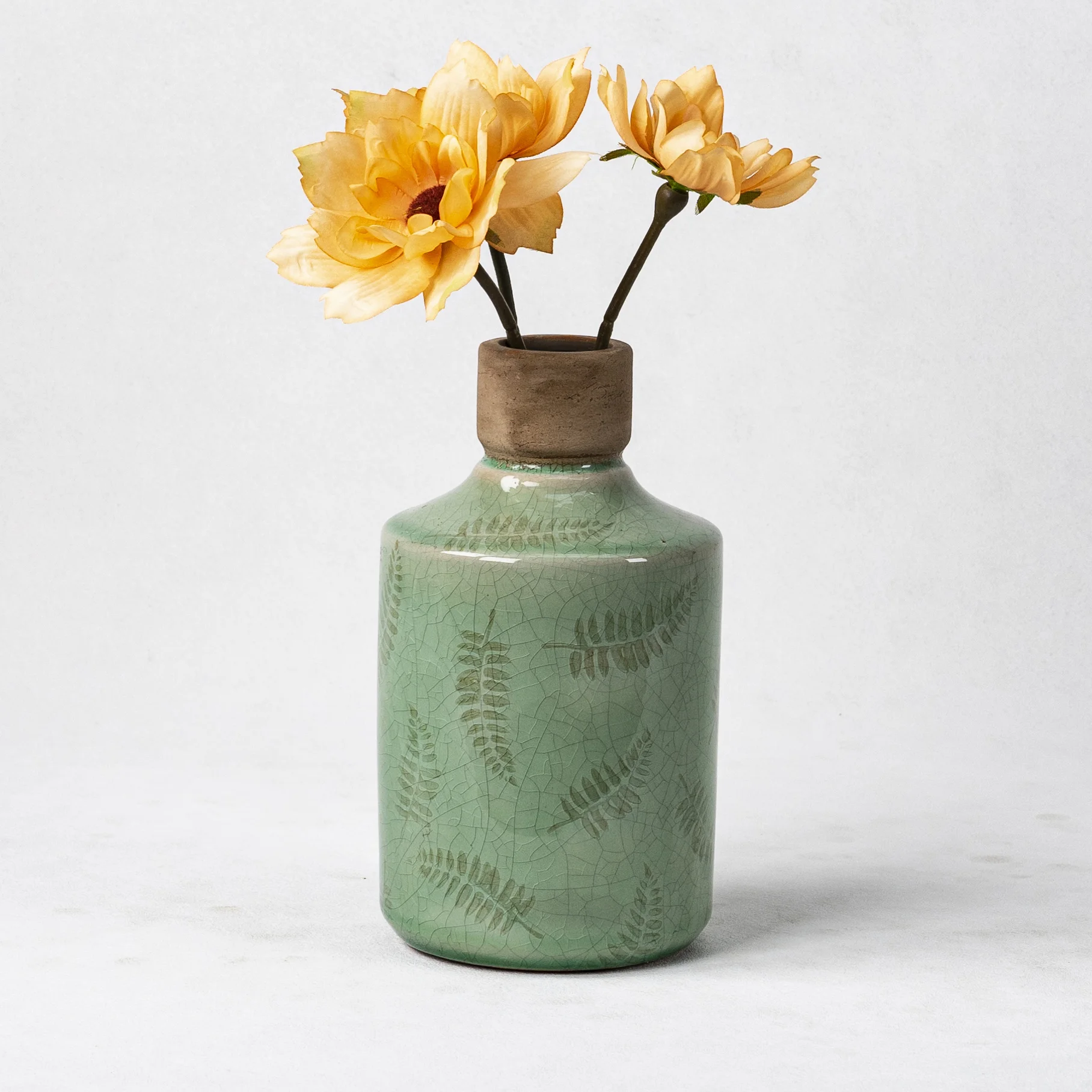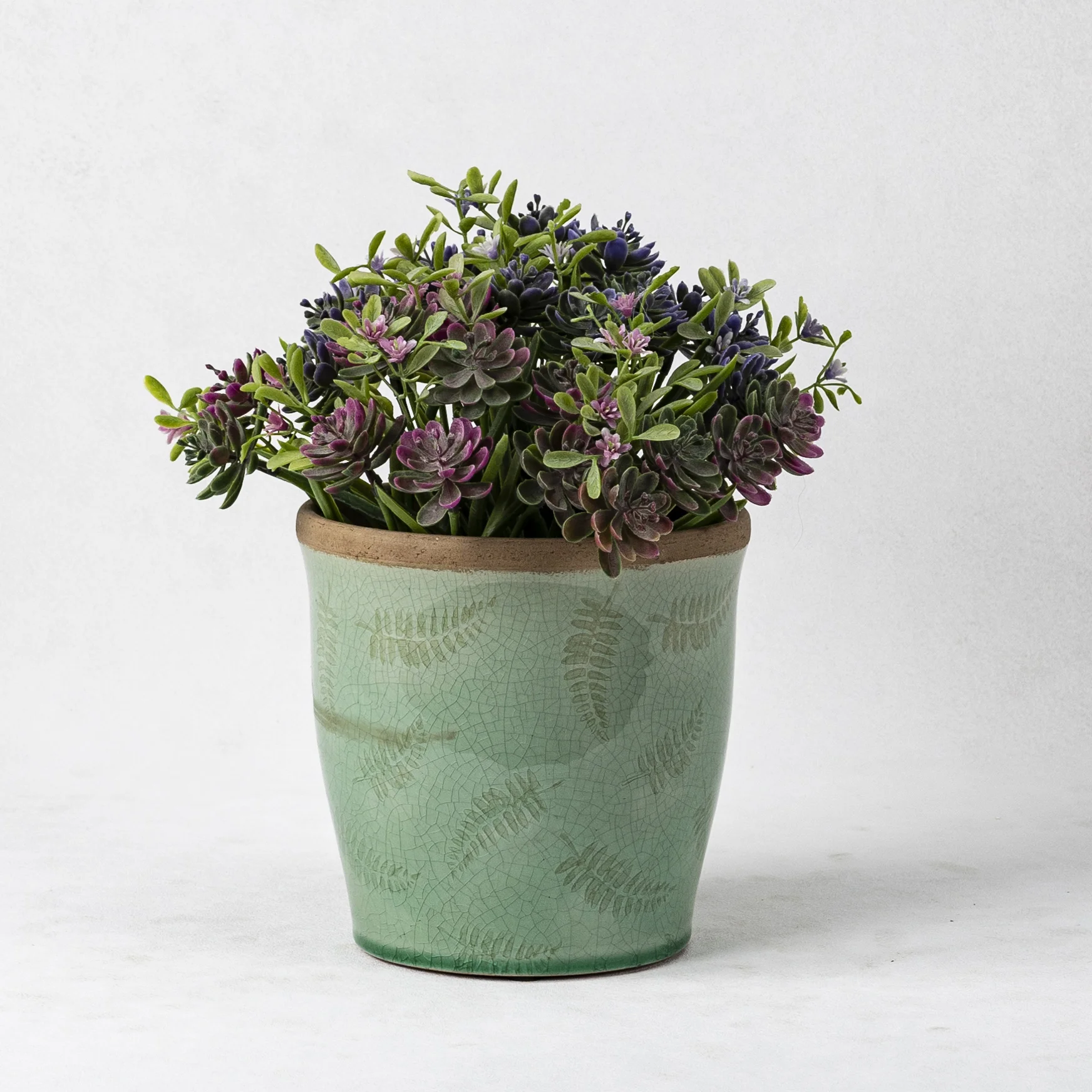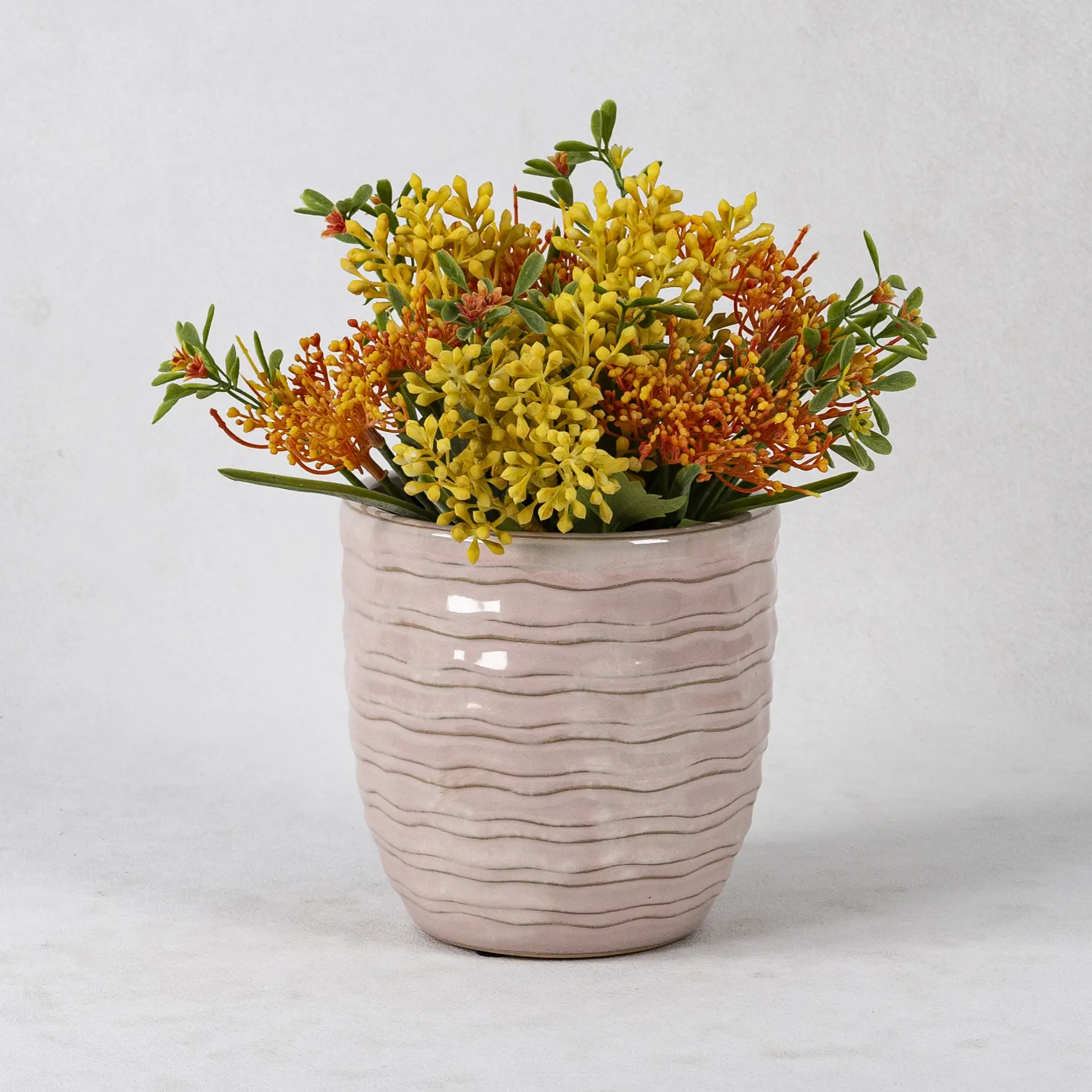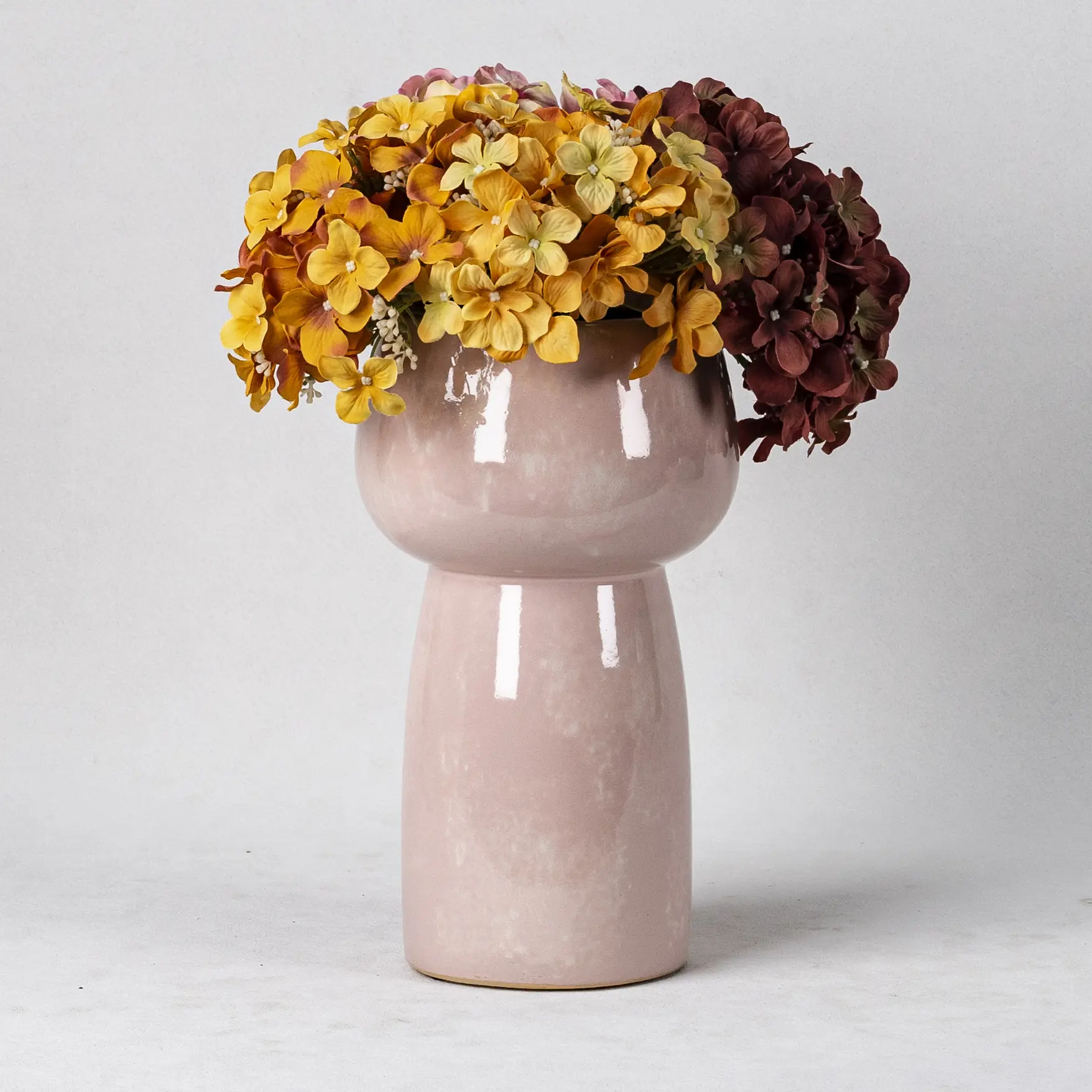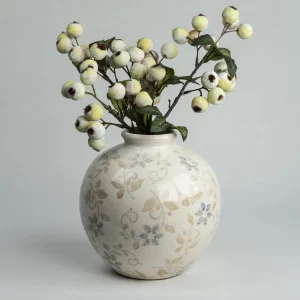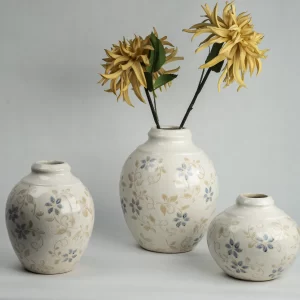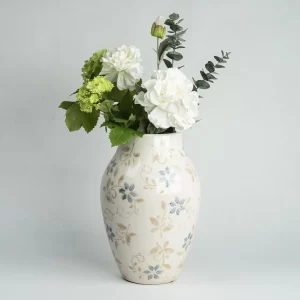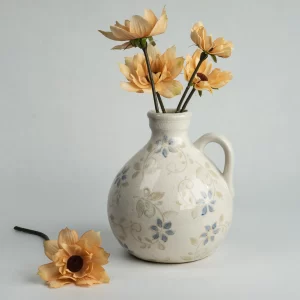A judiciously selected ceramic vase or flower pot can instantly change the atmosphere of a room. Ceramics, flower pots, and vases for sale can be generally categorized into two groups: industrial mass-produced ceramics and handmade ceramics.
Handmade ceramics are highly valued among collectors for their aesthetic aura and unique value, while mass-produced ceramics have been the choice of families and gardeners due to their cheap prices and popularity.
SANTAI is a ceramic home decor & garden decor manufacturer. We’ll explain the differences between handmade ceramic vases and mass-produced ceramic flower pots and help you choose the right one. This guide covers aesthetics, functionality, durability, price, and application scenarios.
The Unique Charm of Ceramic Vases and Pots
Flower vases and pots are not mere containers, but also play a critical role in interior design.
Ceramic vases: The vases are typically used for flower arrangement and interior design, and the task of the vases is not merely to hold fresh flowers, but also to add something to the room. A superbly crafted vase can easily be the focal point.
Ceramic flower pots: used mainly for plant growing or garden decoration, they must be both aesthetic and practical, such as having a drainage function and weather resistance. Ceramic pots need to have good temperature control properties to allow plants to grow in a stable environment and enhance the natural landscape.
Practicality and aesthetics belong to ceramics, and they take an indispensable position in modern interior and garden design.
Handmade Ceramics: The Warmth of Art
Handmade ceramic vases and flower pots are carefully crafted from drawing, carving, glazing, to firing. Each piece of work is unique; it is more like an artwork than a practical item.
The uniqueness of vision and touch
Handmade ceramics often have subtle irregularities, such as subtle changes in shape or the natural flow of glaze. These details are not flaws, but a reflection of the exquisite craftsmanship of the craftsmen, adding warmth and personality. Especially in vase design, kiln enamel, hand-drawn patterns, and carved textures endow it with extremely high artistic value, and even simple bouquets can be refreshed.
Customized advantages
For those who pursue personalized styles, handmade ceramics can be customized according to specific sizes, patterns, or brands. Flower pots can also be customized according to the needs of plants, balancing practicality and fashion sense.
Collection value and emotional value
Handmade ceramics have collectible value, especially works that use traditional craftsmanship, limited editions, or signature designs. For consumers, these items are not just decorations, but also expressions of lifestyle and artistic appreciation.
Mass-Produced Ceramics: Practical Everyday Choices
Compared with handmade ceramics, mass-produced ceramics dominate the market with their advantages of standardized production and affordable prices. Industrial production has made these ceramics widely popular, affordable, and uniform in appearance, making them very suitable for bulk procurement.
Consistency and ease of coordination
The ceramic products produced in bulk are produced using molds, which are almost identical and very suitable for consumers who value cleanliness, coordination, and aesthetics. They are also widely used in restaurants, hotels, or large garden projects.
Cost-effective
Mass production reduces costs, allowing consumers to purchase multiple vases or flower pots without excessive expenses. You can change styles or colors according to the season without worrying about budget pressure.
Functionality and durability
Over the years, the quality of mass-produced ceramic products has continuously improved, such as waterproof glazes, anti-slip bases, and advanced quality control. Especially outdoor flower pots, thanks to standardized drainage design and weather resistance testing, are suitable for long-term use.
Durability and Usage Scenarios
The durability of ceramics is not solely determined by whether they’re handmade or mass-produced—it’s also influenced by usage.
Indoor use: Handmade vases are perfect for placing in living rooms, study rooms, bedrooms, and other spaces that prioritize aesthetics and have minimal environmental impact. Batch-produced vases are more suitable for placement in places where flowers and plants are frequently replaced, such as kitchens or balconies.

Outdoor gardens: For flower pots exposed to harsh weather, mass-produced ceramics are usually more suitable because they have undergone standardized durability testing.

Large plants vs. small plants: Large planters for large plants should prioritize stability and cost-effectiveness (mass production), while planters for small decorative vases or coffee tables can be used as handmade artworks to enhance the style of interior design.
Price and Value Comparison
The price distinction between mass-manufactured ceramics and handmade ceramics is considerable, but value goes far beyond price.
Handmade ceramics are expensive, but their artistic, unique, and emotional value cannot be matched. For consumers or collectors who would like to portray their personal taste, handmade ceramics are the ideal choice.
On the other hand, mass-produced ceramics are cheap and generic, and it is simple for homeowners to alter styles and introduce larger-scale decor.
Properly designed homes or gardens tend to blend two styles in a bid to balance style and practicality.
Mixing Handmade and Mass-Produced Ceramics
You need not be caught between mass-produced and handmade ceramics. Combining and mixing can add character and depth to your space:
Basic decoration: Use plain mass-produced flower pots in gardens, balconies, or kitchens to create a neat environment.
Focal point: Place handmade vases or artistically carved flower pots in the living room, entrance hall, or dining area to gain the attention of individuals.
Seasonal changes: Employ cheaper mass-produced ceramics to change colors or design every season so that your house is always colorful and refreshed.
Purchasing Tips and Selection Guide
- Check the glaze surface: Fine unevenness or natural changes in the glaze surface can add charm to handmade ceramics, while mass-produced ceramics should have a flawless and smooth surface.
- Check the base: The flowerpot should have suitable drainage holes; The vase should have a stable and smooth base to prevent tipping over.
- Choose according to usage: Batch-produced flower pots are often used, while handmade flower pots are used for gift giving, collection, or artistic display.
- Brand and craftsmanship: Choose well-known manufacturers with quality certification to ensure safety and aesthetics.
Conclusion
Mass-produced ceramics and handcrafted ceramics are not in reverse, but different design solutions.
Handmade vases and flower pots can be treated as works of art, reflecting the master skills and creativity of masters, and are the optimal choice for collectors and individuals looking for uniqueness.
Mass-produced ceramics are practical helpers, providing cost-effective, reliable quality, and fully functional solutions for daily use.
About Us

Santai is a trusted ceramic home decor & garden decor manufacturer, specializing in high-quality ceramic decorations for both interior and outdoor spaces. Our product range includes decorative vases, planters, and statement pieces designed to elevate home aesthetics and enhance garden landscapes.
We provide custom ceramic flower pots and vases solutions, offering professional OEM and ODM services to help brands and retailers create unique collections that reflect their market positioning.
As a leading supplier, we offer wholesale handmade & mass-produced home ceramic vases and pots decor, and wholesale handmade & mass-produced garden ceramic vases and pots decor for large-scale distribution, ensuring flexibility for global partners.

